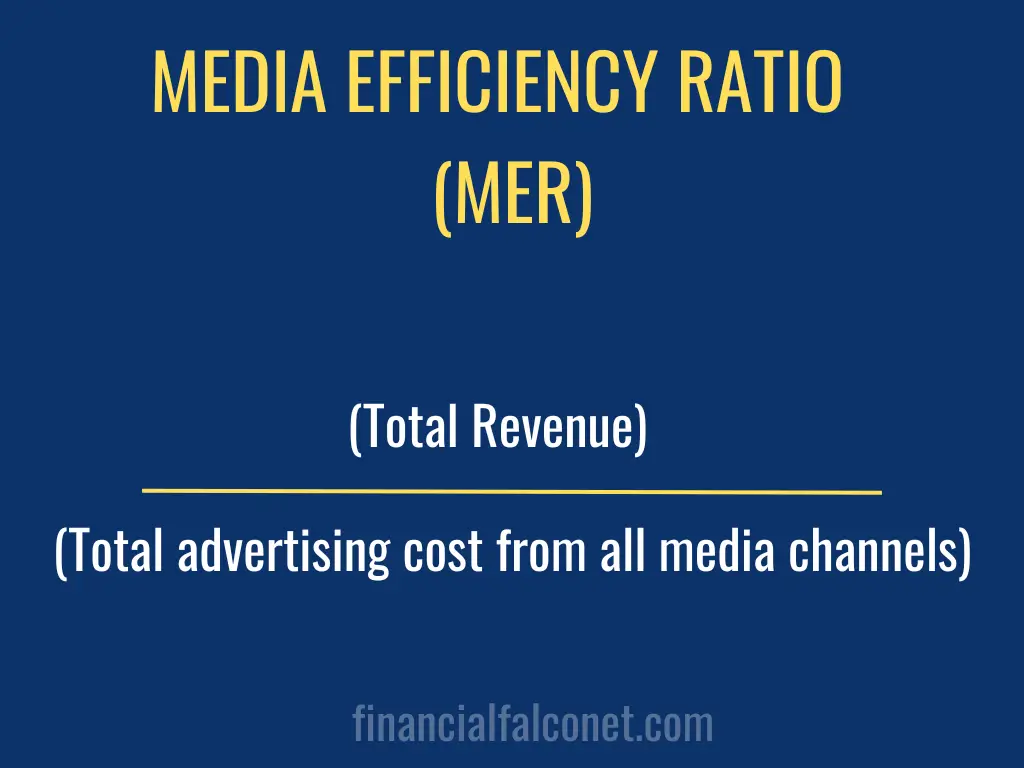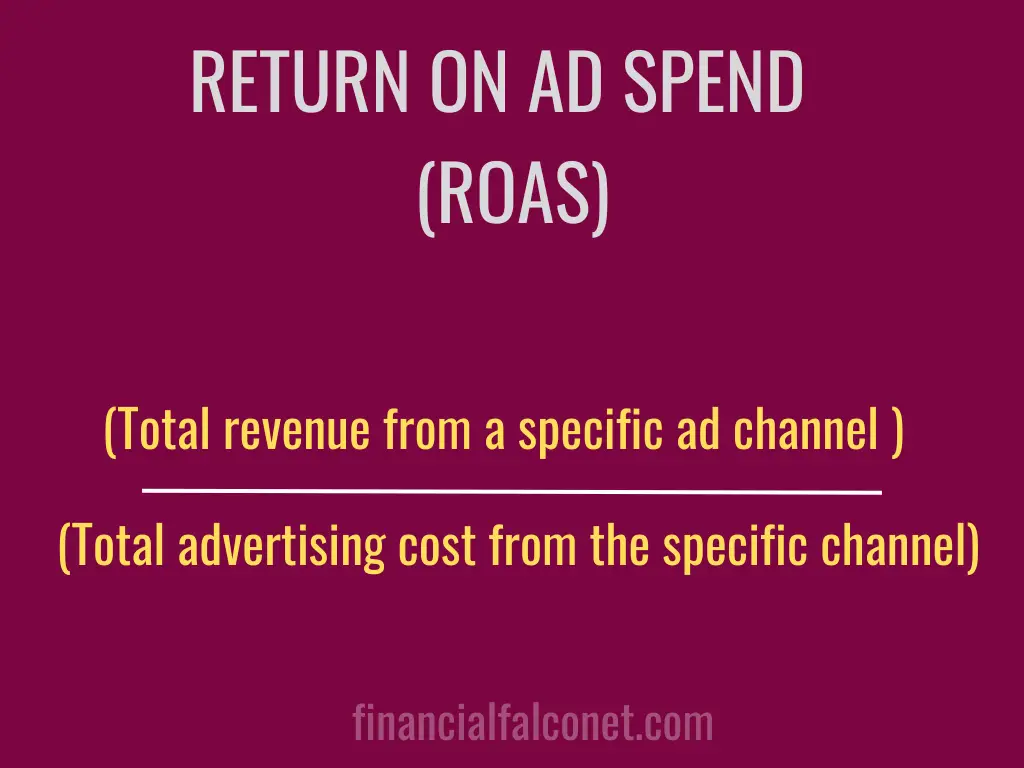When it comes to digital marketing, two of the most commonly used metrics are Marketing Efficiency Ratio, or as some may called it, Media Efficiency Ratio (MER) and Return on Ad Spend (ROAS). Both of these metrics measure the success of your campaigns, but understanding the differences between them is key to optimizing your campaigns for success.
In this post, I’ll break down differences between MER vs ROAS; their similarities, and what each metric means so you can better assess the performance of your campaigns. We’ll also discuss how to use both metrics together, so you can get a more comprehensive view of your campaign performance.
What is MER?
MER is defined as the ratio of the total revenue to the total advertising costs over a given period of time. MER stands for Marketing Efficiency Ratio; it is also called Media Efficiency Ratio, or Media Effectiveness Ratio. In other words, it’s a measure of how much money you spend on all forms of advertising relative to the total revenue that you made over the time of advertising.
You have to understand the concept of MER to know how to use it; many people calculate it differently and some call it with different names, leading to so many confusion regarding MER in particular. In fact, some people call it Media Effeciency Rating while others still call it as Media Effectiveness Rating, this is the reason why the acronym is better to conceal how you call it.
The most important thing to know about MER is that it is used to calculate for the ratio between what you are spending for running adverts and what you are making as revenue over the course of time during which you run the adverts. For example, when you advertise your products across social media, print media, and on billboards in the month of January 2023; then MER will show you how much you made in January 2023 relative to the amount of money you spent in order to advertise the products across those media channels (social media, print media, and on billboards).
The aim of MER is to show if you are losing money or you make more money when you run adverts.
The limitation of MER is that it cannot tell you how much of your total revenue was generated from a specific media channel. This is where ROAS (Return on Ad Spend) comes into play, which is explained in the next section.

Calculation and Example
To calculate MER, divide the total revenue by the total advertising spend. This will give you a ratio that represents how much of your ad budget is being used to generate sales. For example, if your total revenue from sales is $100 and your total ad spend is $200, your MER would be 1:2; which means before you earn $1, you have to spend $2 on adverts. It shows you are not making profit and you are losing money.
But what happens if one advertising channel is solely responsible for eating into your revenue? What if more than one channel is eating into the revenue? This is where you make use of ROAS.
What is ROAS?
ROAS is defined as the ratio of revenue generated from a specific campaign to the amount spent on that specific campaign. In other words, it’s a measure of how effective your a particular advertising channel is in terms of generating sales.
ROAS is a good metric to track if you want to know how effective a particular advertising is in terms of generating sales; but it is limited when you want to know how much you’re spending on a particular advertising channel relative to the number of people who see your ad.

Calculation and Example
ROAS measures how much revenue you generated from a media channel for every dollar spent on advertising in the media channel. To calculate ROAS, divide your total revenue (derived from a particular advertising channel) by your total ad spend (total of your advertising cost from that particular channel).
For example, if you generated $500 in revenue from an ad campaign with a $200 budget, your ROAS would be 2.5x. This means you made 2.5 times more money from that particular advert.
ROAS would have been the best advertising metric to use in an ideal world where all adverts can be tracked in order to know how many impressions the advert had, the number of sales generated from the ads, etc. But in real life, you cannot track all advertising channels to know where a sale came from. This is the cutting line between MER vs ROAS.
Since we have known what ROAS vs MER are all about, let us take a look at how they differ.
Differences between MER vs ROAS
- The Media Efficiency Ratio measures media buying efficiency for all channels used in advertising while ROAS looks at the return on investment from a particular marketing activity.
- ROAS can be used to optimize campaigns for profitability but MER cannot be used to optimize for profit because you cannot use MER to know the specific channel that generates more sales and which one does not.
- The media efficiency ratio doesn’t take into account other important factors such as brand awareness or customer lifetime value while the return on ad spend does consider these factors. Let’s assume every Christmas you do advertise on Facebook and Google with the same amount of money always; but this year, you made so many sales. Would you say it is because of this year’s ad campaign or because people have known your product and liked it and now bought it and not necessarily as a result of your ad? When you use MER, you will miss out on brand awareness and the lifetime value of a customer. But if the advertising channel can be tracked, then ROAS will show you the reason for the increase in sales.
- MER only tells you if you’re wasting money on your media ads while ROAS will show you which activities are actually driving sales and profit.
- MER calculations can vary greatly depending on the method used while ROAS is more standardized making comparisons easier.
Similarities Between MER vs ROAS
- Both MER and ROAS are important metrics to track when assessing the performance of your digital marketing campaigns.
- Both have their own strengths and weaknesses.
Tabular Differences Between MER vs ROAS
| Criteria for differences | Media Efficiency Ratio (MER) | Return on Ad Spend (ROAS) |
|---|---|---|
| Definition | MER measures media buying efficiency | ROAS measures the return on investment for a particular marketing activity. |
| Formula | (Total revenue)/(Total advertising spend from all ad channels) | (Total revenue from an ad campaign )/(Total ad spend for the ad campaign) |
| Uses | MER only tells you if you’re wasting money on your media buying | ROAS will show you which activities are actually driving sales and profit. |
| Which is a better metric? | If your problem is to increase your brand awareness by running adverts, then you may use MER. | If sales and profit are most important, ROAS is likely a better choice if the advertising channel has tools for tracking sales, impressions, etc. |
Which is better? MER or ROAS?
If your goal is to increase brand awareness, then MER may be the better metric to track but if the goal of your business is to increase sales, then ROAS is likely the better metric to keep an eye on.
This shows the decision to choose between ROAS vs MER is solely dependent on the specific goals of your business.
When you have a channel where you can track sales, revenue, impressions and cost such as facebook ads or google ads, then ROAS is better to use than MER.
Conclusion
There are a few key differences between MER vs ROAS; while MER is a measure of how efficiently a company spends its advertising budget across various channels, ROAS measures the profitability of those ad dollars spent per advertising channel. Both are important for a business when advertising, depending on the goals of the business and the tools available to track progress.
Last Updated on November 3, 2023 by Nansel Nanzip BongdapNansel is a serial entrepreneur and financial expert with 7+ years as a business analyst. He has a liking for marketing which he regards as an important part of business success.
He lives in Plateau State, Nigeria with his wife, Joyce, and daughter, Anael.
